How to choose the right size area rug for your bedroom, according to experts
Everything you need to know about bedroom area rug sizes – plus where to lay yours


Laying an area rug in your bedroom guarantees a cushioned spot for your feet, and offers an opportunity to add another layer of color and pattern to your sleep sanctuary.
But how do you go about choosing the right size bedroom area rug? And where is the best place for it?
'Placing a rug in the bedroom adds both style and function, helping to create a calm, cozy environment while also adding a soft cushion underfoot,' says Therese Germain, Vice President of Product, Ruggable.
We asked Therese and more design experts to reveal their top tips for choosing the right size bedroom rug, and offer tips on where to lay yours and why.
What is the right size area rug for a bedroom?
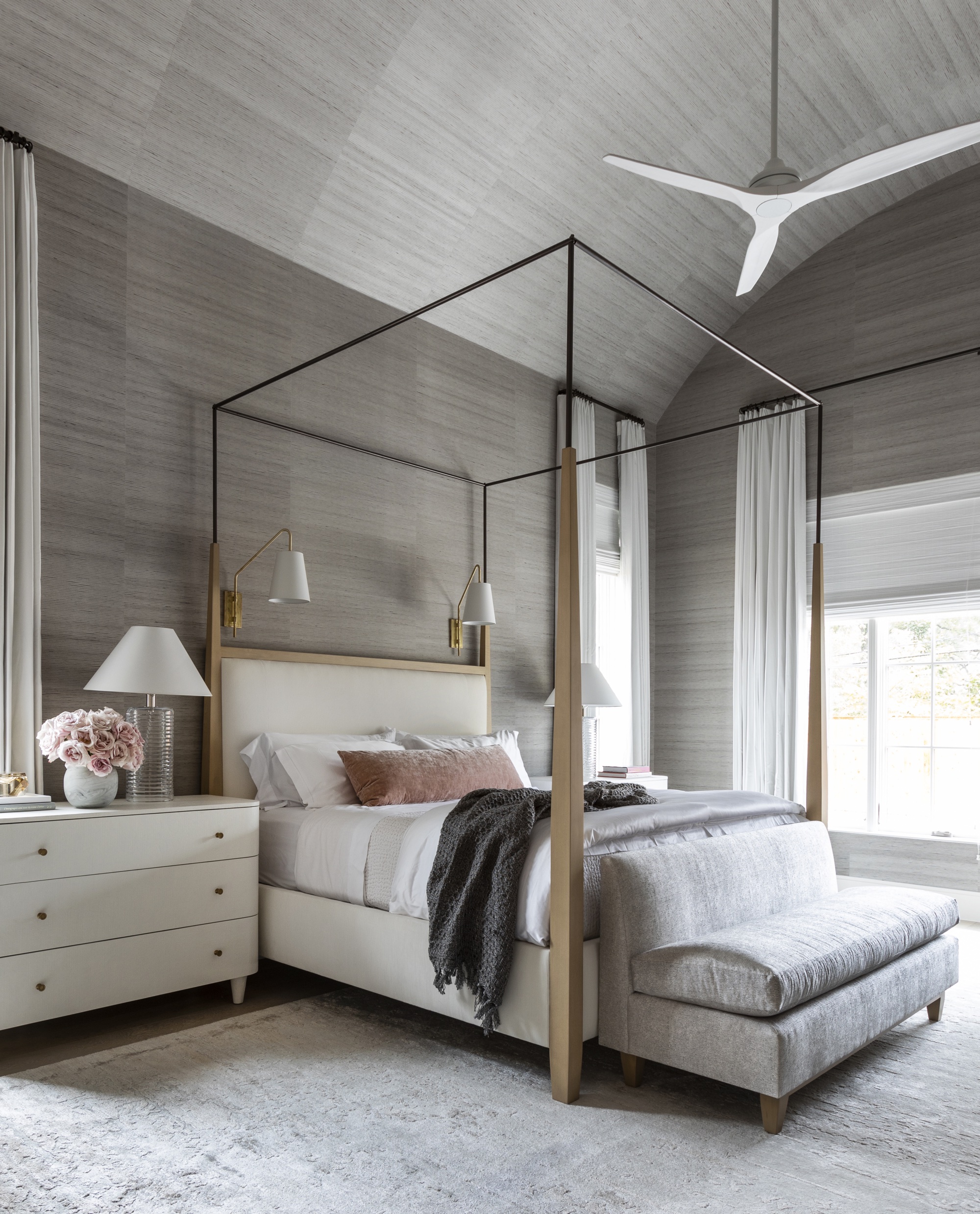
The general rule for choosing a rug for a bedroom is to go as large as the space – and your budget – allows. This can have the effect of making a small bedroom look bigger. Just remember to keep at least a foot of space between the rug and the wall for the most successful aesthetic finish.
However, this is not a must, and the size of a bedroom area rug often depends on the rug's position (more on this below), if it is not to cover the entire floorspace, as suggested above. 'When deciding on a bedroom rug size, be sure that the rug is large enough for a few feet of it to protrude on both sides and the foot of the bed. This allows for both added comfort when getting in and out of bed while anchoring the space,' says Marie Flanigan, of Marie Flanigan Interiors.
'A bedroom’s area rug should typically run with the longer side parallel to the headboard and footboard,' continues Marie.
Design expertise in your inbox – from inspiring decorating ideas and beautiful celebrity homes to practical gardening advice and shopping round-ups.
How big should an area rug be in a small bedroom?
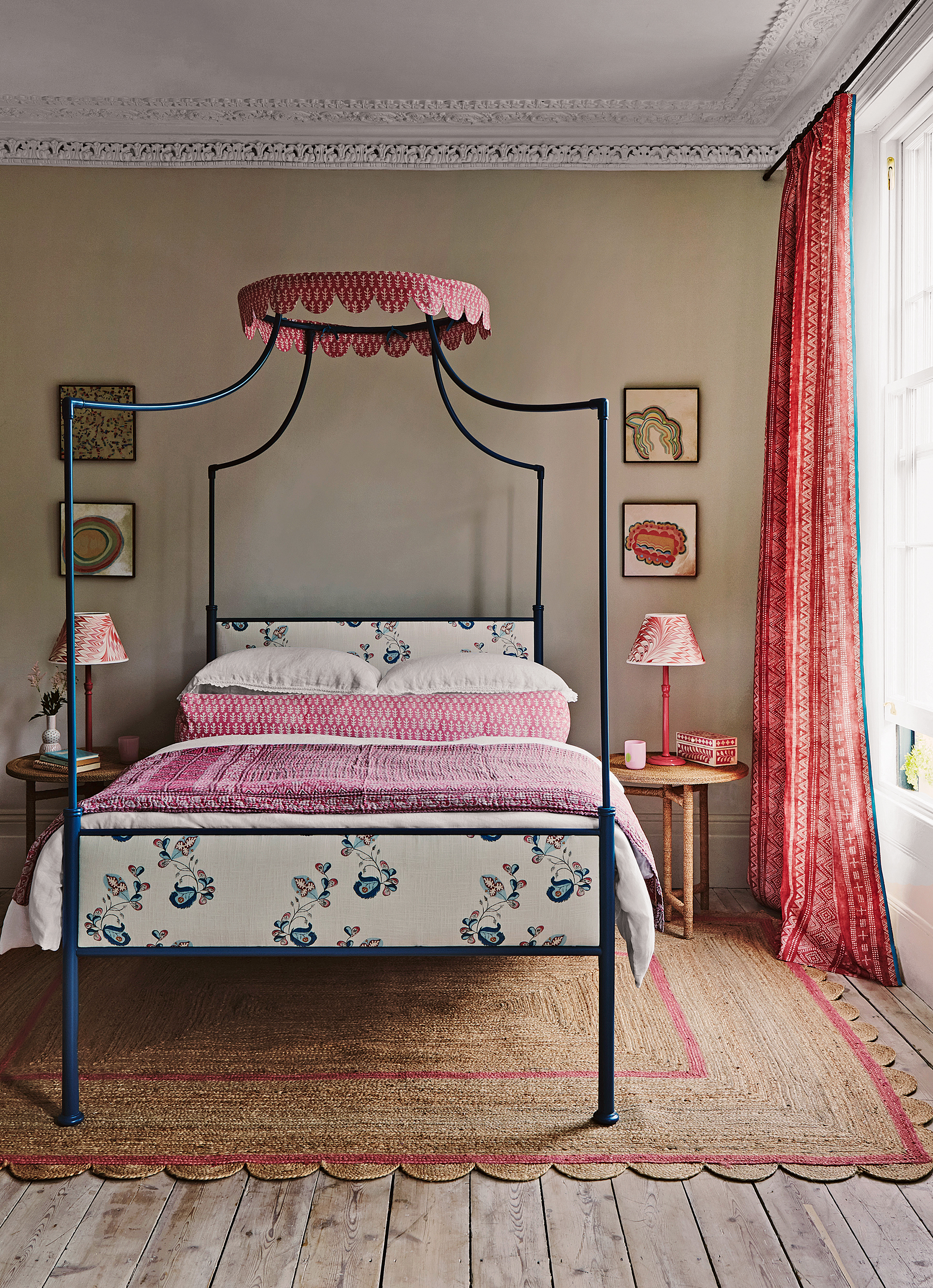
To give a small bedroom a smart, unified look, the rug should be large enough to accommodate most of your furniture, accessories and decor elements.
Therese Germain says: 'Think about proportion – make sure your rug is proportionate to the furniture and space. You don’t want a very large rug with small furniture and vice versa – a good guide to follow is that you want your rug to be larger than the largest piece of furniture. The longest side of the rug should always be longer by at least 6 inches than the largest piece of furniture.
'You don’t need to guess when it comes to size though – you can mark out the area with a blue painter’s tape and then lay your furniture out within the tape to see if this size works for you or if you need to size up or down.'
How big should an area rug be in a large bedroom?
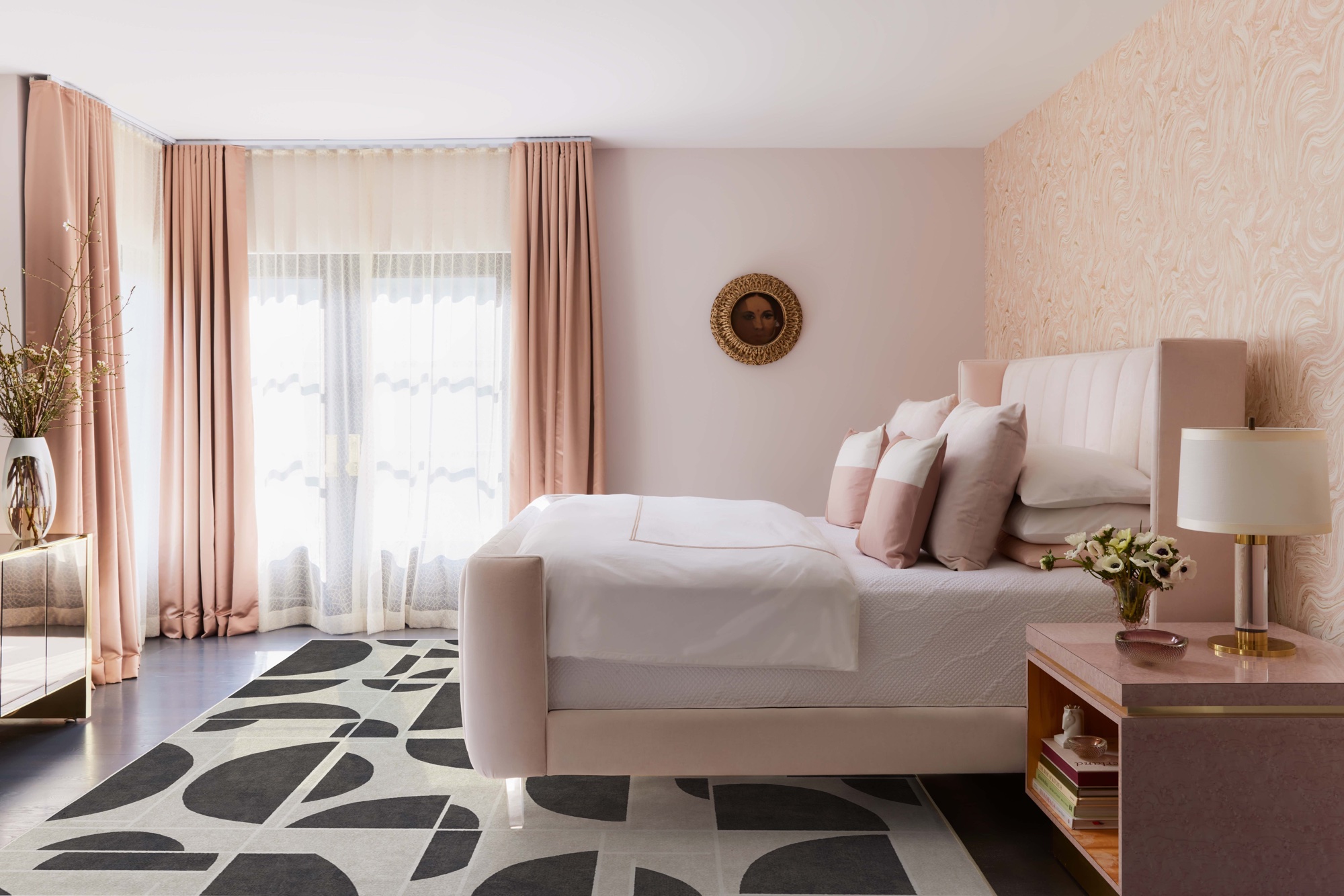
'An 8ft x 10ft rug covers a king bed and nightstands, with 3ft of rug on either side of the bed, while a 6ft x 9ft rug gives a 18in border on each side.' This rug size also makes a good option for placing on the lower two thirds of the bed (see below for more on this),' advises Therese Germain.
'You could also opt for a larger 12ft x 15ft rug if you want your bed and nightstands to both sit on the rug and yours room is particularly big.
'Always leave some visible floor space, as you want to make sure there is a distinction between the floor and rug – we recommend about 18 inches,' continues Therese. 'Do not get a rug that covers the entire room (unless there is something on the floor you are trying to cover).
'Think about it in terms of creating layers of colors, textures, and patterns through the use of different materials, where your first layer would be the floor, next is the rug, and then furniture and décor.'
What size rug should you get for twin beds?
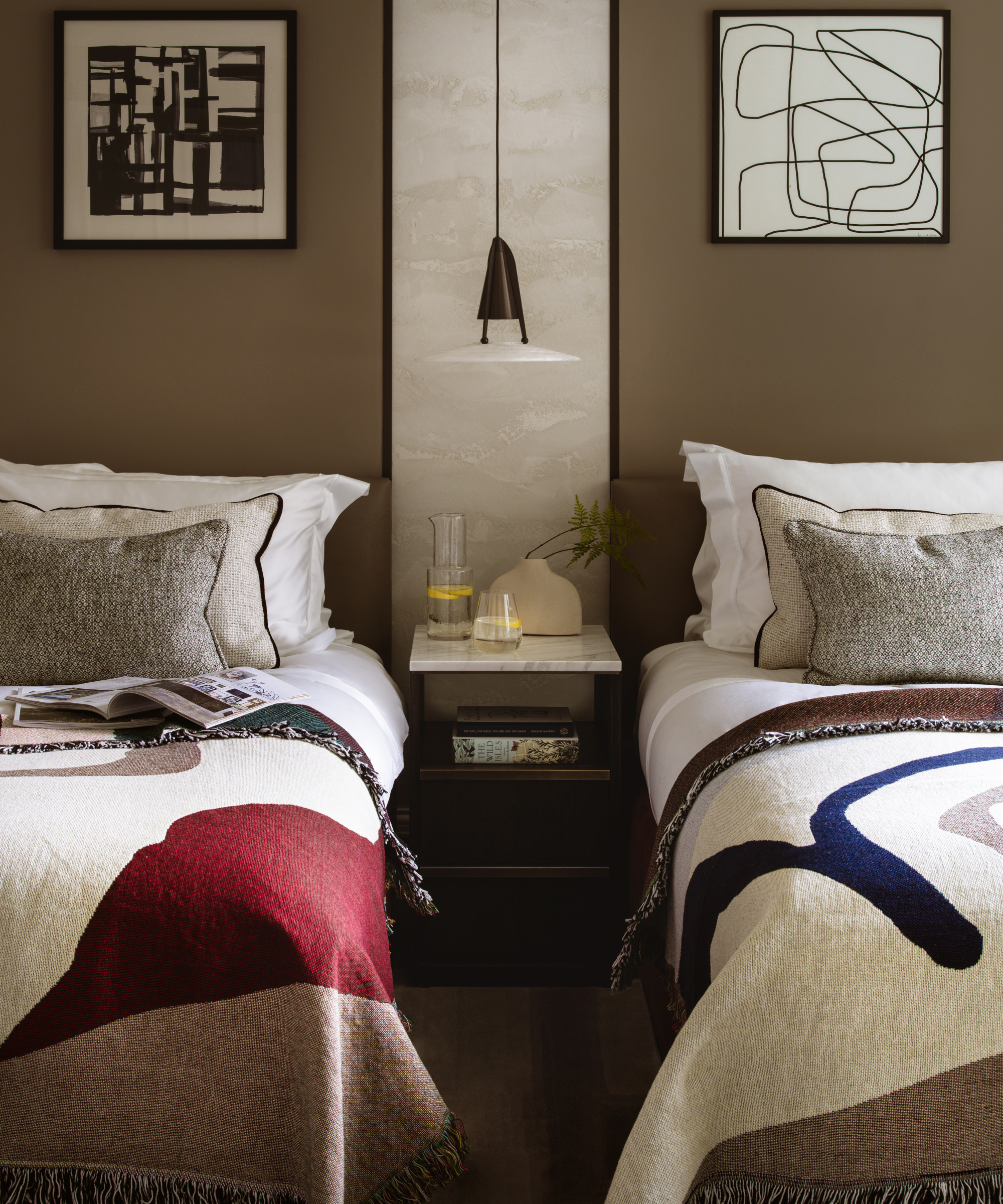
Therese says: 'An 8ft x 10ft, 6ft x 9ft, or 5ft x 7ft rug all fit nicely under a twin bed, leaving ample room around the border. Two 3ft x 5ft or smaller rugs also work perfectly on either side of the bed.
'For double twin, a large 9ft x 12ft will fit a bench at the end of each bed and a nightstand in the middle.
'You can also place a 3ft x 5ft rug between the two beds,' says Therese. 'Alternatively, place a 2.5ft x 7ft or 2.5ft x 10ft runner rug across the middle of the beds.'
What size rug should you get for a double bed?
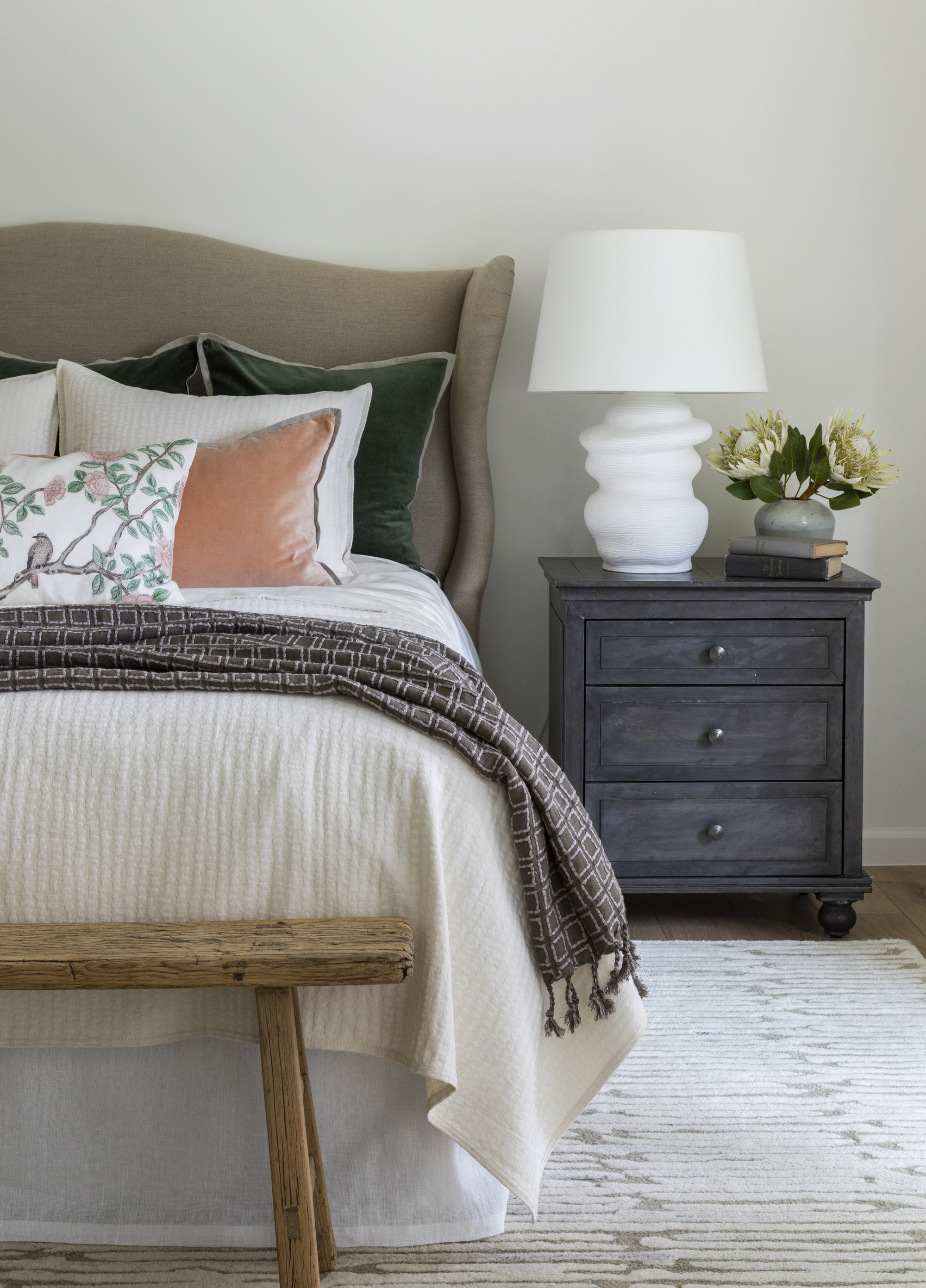
A 6ft x 9ft area rug fits nicely under a double bed, or opt for two 3ft x 5ft rugs on either side of the bed for added cushioning.
How much rug should show around the three sides of the bed?
We recommend a minimum of 18in of rug to show around each side of the bed,' says Therese Germain, Vice President of Product, Ruggable. 'If there isn’t room for an area rug in your bedroom, we suggest using a smaller rug next to the bed to add an accent and break up the space.'
She adds: 'For a larger bedroom we’d recommend 24in or more, as you have the space for it, and you don’t want the rug to feel like an island in the middle of the room. It really depends on what look you want your room to have.'
And Marie Flanigan agrees, adding: 'I would make sure the rug extends at least one foot (12in from underneath the bed on three of the four sides. Extending two to 3ft (24-36in) beyond the bed is ideal.'
How much space should you leave between the bedroom area rug and the walls?
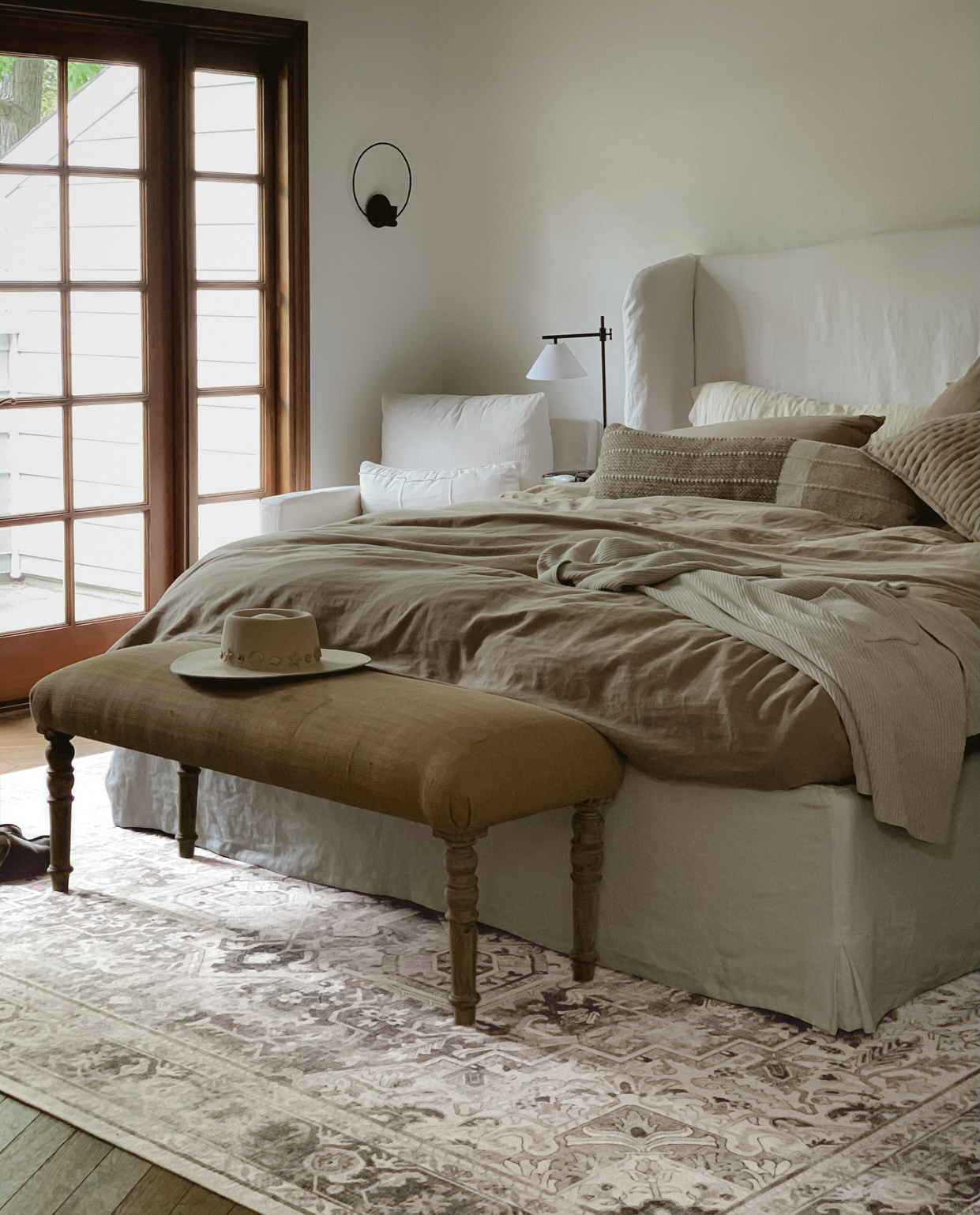
'You should leave at least one foot (12in) between the rug and walls,' says Marie Flanigan.
And Therese Germain adds: 'Always leave some visible floor space, as you want to make sure there is a distinction between the floor and rug – we recommend about 18in.'
Where should a bedroom area rug be positioned?
Where the bedroom area rug sits will also help you determine the size you choose. There are generally three main options for styling your bedroom area rug:
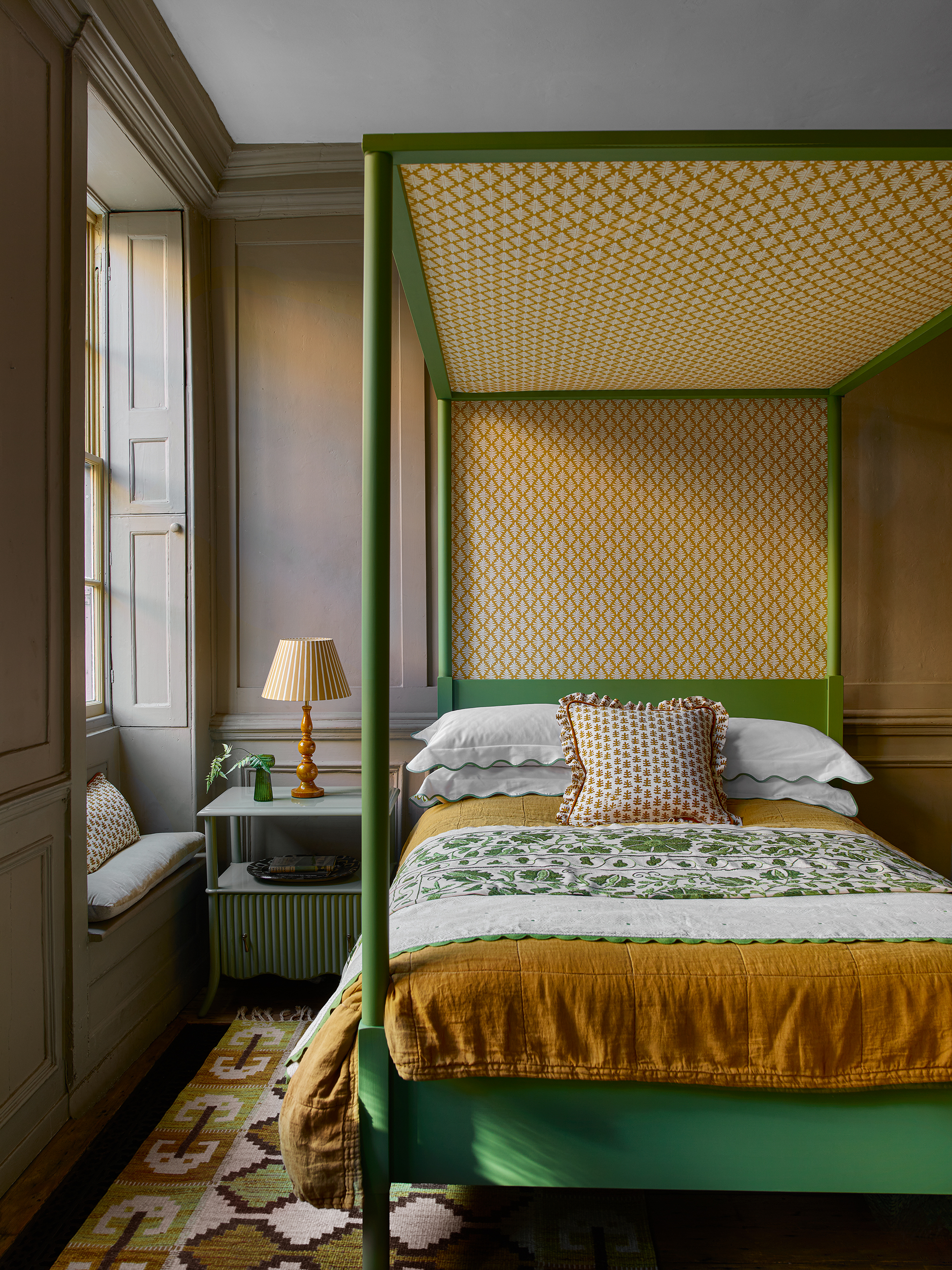
- Everything sits on the area rug: This option sees the bed, nightstands and, if you have one, a bench at the bottom of the bed all sitting on the area rug. This will mean choosing a large rug that is around a foot smaller all around than the size of the room.

- The lower two thirds of the bed sits on the rug: 'Another option is to place the rug further down the bed, so that the lower two thirds of the bed is on the rug, but nothing else is,' says Ruggable's Therese Germain. 'With this layout option, the rug does not sit under the bedside tables but in front of them. There should always be a small gap (about 7-8in) of visible flooring between the front of the bedside tables and the start of the rug on the floor. In terms of width, the rug should align with the outer edges of your bedside table on either side – if the edge of the rug ends in the middle of your bedsides, it’s not wide enough and will look out of place.'
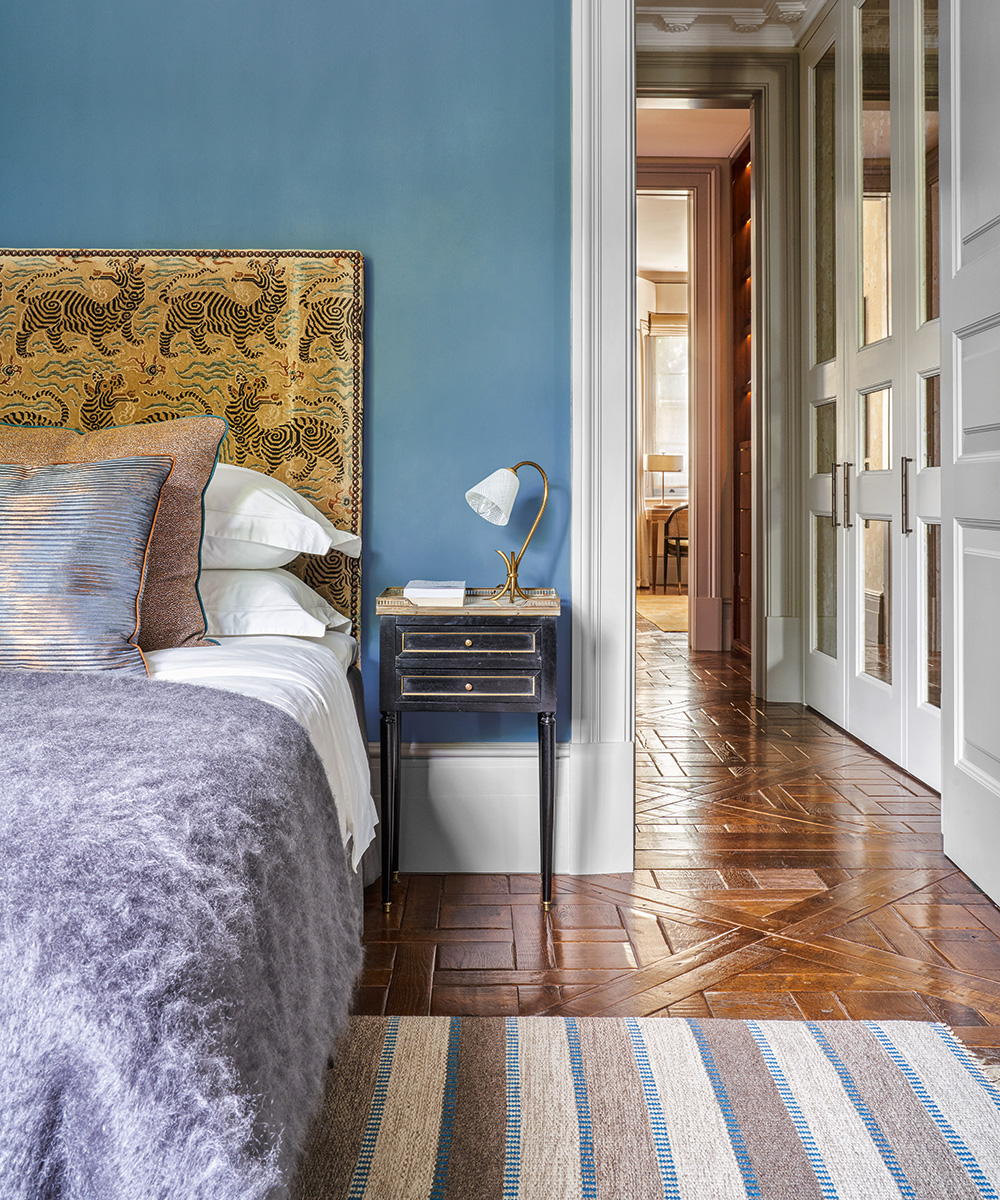
- Only the lower third of the bed sits on the rug: This option means that most of the bed won't sit on the rug, so won't offer cushioning for your feet when you get up. However, it's a good option of you have flooring or marks you'd like to cover, or if you're adding a smaller accent rug over a larger one or a carpet to add texture.
Does an area rug make a room look bigger or smaller?
If the correct size is chosen, an area rug can make a bedroom look bigger. Always make sure to choose the largest size possible, without covering the entire floor.

Ruth Doherty is an experienced digital writer and editor specializing in interiors, travel and lifestyle. With 20 years of writing for national sites under her belt, she’s worked for the likes of Livingetc.com, Standard, Ideal Home, Stylist and Marie Claire as well as Homes & Gardens.